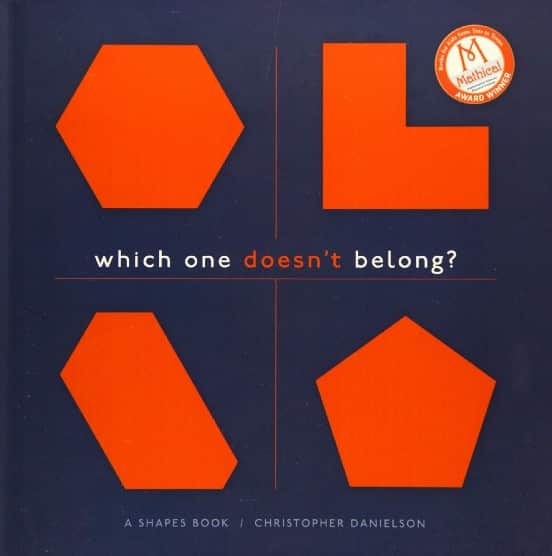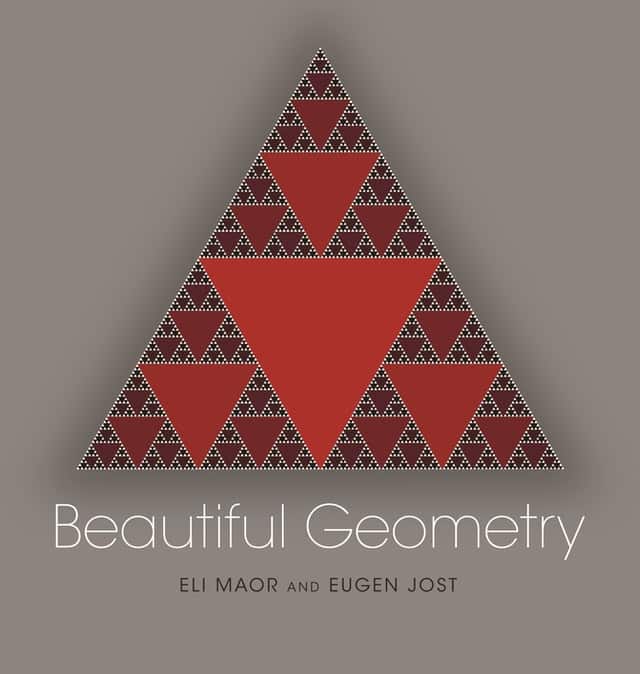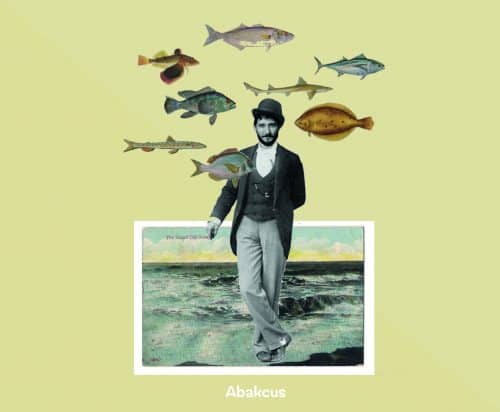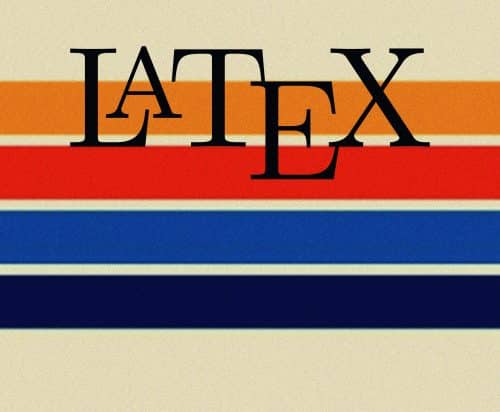When art and math collide, the results are always mesmerizing and compelling. While mathematicians have been trying to understand the world, designers have expressed the essential mathematical concepts have been for thousands of years.
There are so many books for designers that take the reader on a geometrical journey and show the connection between art, design, and mathematics and a mathematical explanation of how artworks in a way that you can all understand.
Is There Math in Arts and Design?
Mathematicians believe that mathematics is full of beauty and creativity, and they use words such as “elegant” and “beautiful” to describe their favorite proofs. Mathematicians also admire mathematical greats such as Gauss, Euler, and Leibniz for their creative capacities, not just their computational abilities.
Many design concepts, such as symmetry, fractals, and logos, directly relate to mathematical concepts and discoveries. So, if you are an artist or a designer, there is a good chance that you are already incorporating math into your work and may not be doing it consciously.
What Kind of Math is Used in Design?
A good number of graphic design courses include maths skills. For instance, designers should know algebra, calculus, and geometry. As an example, you should watch “The Math Behind Pixar Movies.”
Do Designers Need to Know Math?
Many of these individuals fail to realize that mathematics is integral to design. Concepts such as patterns, symmetry, fractals, ratios, and sequence that are so important to design all have a basis in mathematics.
Can You be a Good Designer Without Math?
A good designer’s works are always well-balanced and attractive. And some of the most fundamental design techniques are rooted in mathematical concepts. However, you may be applying them without even realizing it, and that’s why you can still be a good designer without advanced math knowledge.
What are the Best Math Books for Designers?
Below we have curated more than thirty math, geometry, and art books for designers. Here is the list of some excellent books for designers and math people.
“The Fractal Geometry of Nature” is a groundbreaking book that builds upon Mandelbrot‘s previous work and introduces the concept of fractals to the world. It presents a compelling argument that fractals are not just mathematical curiosities, but essential tools for understanding the natural world.
In this extended essay, Mandelbrot explores various case studies from different scientific disciplines, including physics, geography, and astronomy. He examines phenomena such as coastlines, rivers, galaxies, and market prices, demonstrating how fractals can provide insights into their dimensions and structures. The book also introduces innovative methods for measuring “texture” in nature.
While “The Fractal Geometry of Nature” avoids heavy mathematics and proofs, it assumes a solid understanding of mathematical and scientific concepts. It is primarily targeted towards mathematicians and scientifically inclined individuals, although it remains accessible to students and lay readers.
In addition to the scientific content, the book includes historical background and personal accounts from Mandelbrot himself. It also features a captivating color insert showcasing the use of fractals in art and visualization.
Despite being published over thirty years ago, “The Fractal Geometry of Nature” has stood the test of time. It has successfully introduced fractal geometry to scientists and has become ingrained in the scientific community. However, the initial excitement surrounding fractals may have dwindled, leading to their relatively niche status today.
Overall, The Fractal Geometry of Nature remains significant for its unique approach to integrating fractal ideas into broader scientific and historical contexts. It is a must-read for anyone interested in the intersection of mathematics and the natural world.
“W. A. Bentley captured hundreds of snowflakes in his Jericho, Vermont, workshop over the course of almost a century, photographing them and sharing samples of his amazing work with scientists and art educators. No two snowflakes are precisely the same, but they all have a common hexagon as their base, and his painstakingly created photos were astonishing disclosures of nature’s variation in uniformity.
The greatest of Bentley’s photographs were collected and published in 1931 by the American Meteorological Society; this work has long been available in a Dover reprint version. From that wider collection, 72 of the greatest plates (including more than 850 royalty-free, black-and-white images) were carefully chosen for this edition.
These elegant patterns are perfect for use in textile and wallpaper design, as well as a variety of other creative projects. They are an endless source of design inspiration for artists, designers, and craftspeople. Anyone fascinated by the complexity and beauty of design in the natural world will likewise be drawn to these photos.”
This is a biography of Wilson Alwyn Bentley, a Jericho, Vermont farmer who photographed snow crystals, dew, ice, and frost more than 5,000 times. Despite the fact that he took his photos between 1885 and 1931, they have never been matched and are still in high demand. Bentley’s story is one of bravery and perseverance in the face of overwhelming challenges. While still in his teens, he taught himself how to use a microscope to take pictures of snow crystals. He then dedicated years to his fixation before others began to appreciate his work’s beauty and scientific significance. The Snowflake Guy explores the life of a straightforward, intelligent, and compassionate man who spent close to fifty years using a microscope and a camera to capture the beauty of nature. There are 30 black and white pictures in the book.
Which One Doesn’t Belong? a picture book for children written and illustrated by Christopher Danielson, features a thoughtfully designed set of four shapes on each of the book’s vibrant pages. When asked, “Which one doesn’t belong?” each of the shapes has the potential to provide the correct response. Students are naturally led to shift their focus to justifications and arguments based on the geometric properties of the shapes because all of their answers are correct answers.
Danielson shows how to facilitate rich discussions and teach mathematical argumentation using Which One Doesn’t Belong? in the companion teacher’s guide, which can be purchased under the ISBN number 978-1-62531-081-1. He demonstrates how to listen to students’ ideas about shapes with respect and attentiveness. Danielson summarizes the research that has been conducted on how children learn geometry, discusses the place of geometry in the overall mathematics curriculum, and provides a wealth of helpful advice regarding the many different ways in which Which One Doesn’t Belong? can be used in the classroom. He also discusses the mathematical ideas that are likely to emerge on each page, and he helps teachers anticipate and think about students’ likely answers by drawing from his direct experience using Which One Doesn’t Belong? At several different grade levels. This information is drawn from his direct experience.
The majority of educational programs reduce the study of geometry to little more than vocabulary exercises. Which One Doesn’t Fit in the Picture? as well as the guide that goes along with it is potent and adaptable resources that teachers can use to spark animated conversations and in-depth learning about shapes with students of all ages.”
At last, a mathematical explanation of how artworks are given in a manner we can all grasp. Kimberly Elam takes the reader on a geometrical trip, bringing insight and clarity to the design process by exploring the visual correlations that have foundations in mathematics and the essential elements of life.
The Geometry of Design takes a close look at a broad range of twentieth-century examples of design, architecture, and illustration (from the Barcelona chair to the paintings of Georges Seurat, from the Braun hand blender to the Conico kettle), revealing underlying geometric structures in their compositions. Explanations and techniques of visual analysis make the inherent mathematical links clear and a must-have for anyone interested in art, design, or architecture graphic arts. The book focuses not just on the standard systems of proportioning, such as the golden section and root rectangles, but also less well-known proportioning systems such as the Fibonacci Series. These geometric systems are brought to life-giving through detailed diagrams and effective insight into the design process.
“The golden ratio has a limitless capacity to produce shapes with exquisite qualities, including the Giza Pyramids, quasicrystals, and the proportions of the human face. With over 200 exquisite color images that turn this book into the perfect coffee table book, this book invites you to take a fresh look at this timeless subject. It compiles research and information suitable for a textbook.
With thousands of people in dozens of different professions and areas of life around the world, author Gary Meisner reveals the findings of his twenty-year inquiry and partnership. The proof will fill in the information gaps surrounding numerous assertions of the golden ratio’s appearances and applications and present fresh research to advance our understanding.
Regardless of who you are or what you already know about the subject, you’ll learn something new, intriguing, and enlightening from this book. You could even be challenged to see, use, and communicate this special combination of mathematics and science in new ways.”
“Nature is abundant with patterns supported by mathematical concepts, such as the stripes on a zebra, the web of a spider, sand dunes, and snowflakes. In his book The Beauty of Numbers in Nature, Ian Stewart demonstrates how life arises from mathematical principles. The Beauty of Numbers in Nature examines several patterning systems and their mathematical foundations in each chapter. The book also reveals several common patterns that may be seen in both natural and human-made structures, ranging from the simple geometry of classical Greece to the intricate intricacy of fractals.
Stewart examines the mathematics of patterns by drawing on a variety of sources, including the Pythagoreans’ obsession with numbers as the philosophical foundation of the universe, a great mathematician who pondered how a violin makes music, a patent office clerk who realized that space and time could be mixed up, and a rebellious mathematician who questioned why nature shuns such regular geometric shapes as spheres and cylinders in favor of jagged lightning bolts and asy
The book opens with a straightforward and frequently posed query regarding snowflakes’ design and individual uniqueness. How can a tiny amount of frozen water contain such an odd combination of regularity and irregularity? Readers will have discovered by the book’s conclusion that mathematical patterns can take on many different forms, some of which bear no resemblance to patterns at all.”
This breathtaking visual history of geometry will challenge your preconceived notions about the compatibility of mathematics and art. Beautiful Geometry is both a piece of art and a book about mathematics. It features more than sixty magnificent color illustrations of various geometric patterns and theorems, along with short biographies of the individuals and fascinating histories behind each. This exceptional celebration of geometry covers a wide range of topics, from straightedge-and-compass constructions to interesting permutations involving infinity, with artwork by Swiss artist Eugen Jost and text by math historian Eli Maor. As a result, a fun and instructive illustrated journey through the 2,500-year history of one of the most significant fields of mathematics is produced.
Fractal shapes are present in every aspect of nature, from the outlines of clouds to the branching of trees and the curves of coastlines. In this Very Short Introduction, Kenneth Falconer analyzes the wide range of applications in science and parts of economics while also outlining the fundamental ideas of fractal geometry, which revolutionized our mathematical understanding of patterns in the twentieth century.
This delightful read, The Laws of Simplicity, is about design, philosophy, technology, and art. It will teach you how to make your ideas and works simpler and better.
Finally, we are discovering that sanity is simple. We are rebelling against too complex technology, DVD players with many menu options, and software that comes with 75 megabytes of “read me” manuals. The sleek technology of the iPod has made simplicity trendy. The paradox of simplicity, though, can often catch us off guard. We want something that is straightforward and simple to use but that also accomplishes every complex task we might ever need it to. In his book The Laws of Simplicity, John Maeda outlines ten principles for balancing simplicity and complexity in business, technology, and design. These rules can help you need less while really receiving more.
Maeda, an internationally recognized graphic designer and professor at MIT’s Media Lab, investigates the issue of how to redefine the term “better” such that it doesn’t always mean something more, something added on.
Reduce” is Maeda’s first rule of simplicity. Adding technological features isn’t always a good idea because we can. Additionally, Law 2 requires that the features we do have to be arranged logically so that consumers aren’t diverted by functions and features they don’t require. Simplicity, though, is not less for the sake of being less. Go straight to Law 9: Failure: Recognize that some things are never going to be made simple. Maeda’s succinct primer on simplicity in the digital era demonstrates how this concept can serve as the foundation for businesses and the products they produce—how it can influence both business and technology. We can develop the skill of simplification without abandoning ease and significance and reach the equilibrium outlined in Law 10. Maeda refers to this concept as “The One,” and it states that “simplicity is about removing the obvious and adding the meaningful.





















